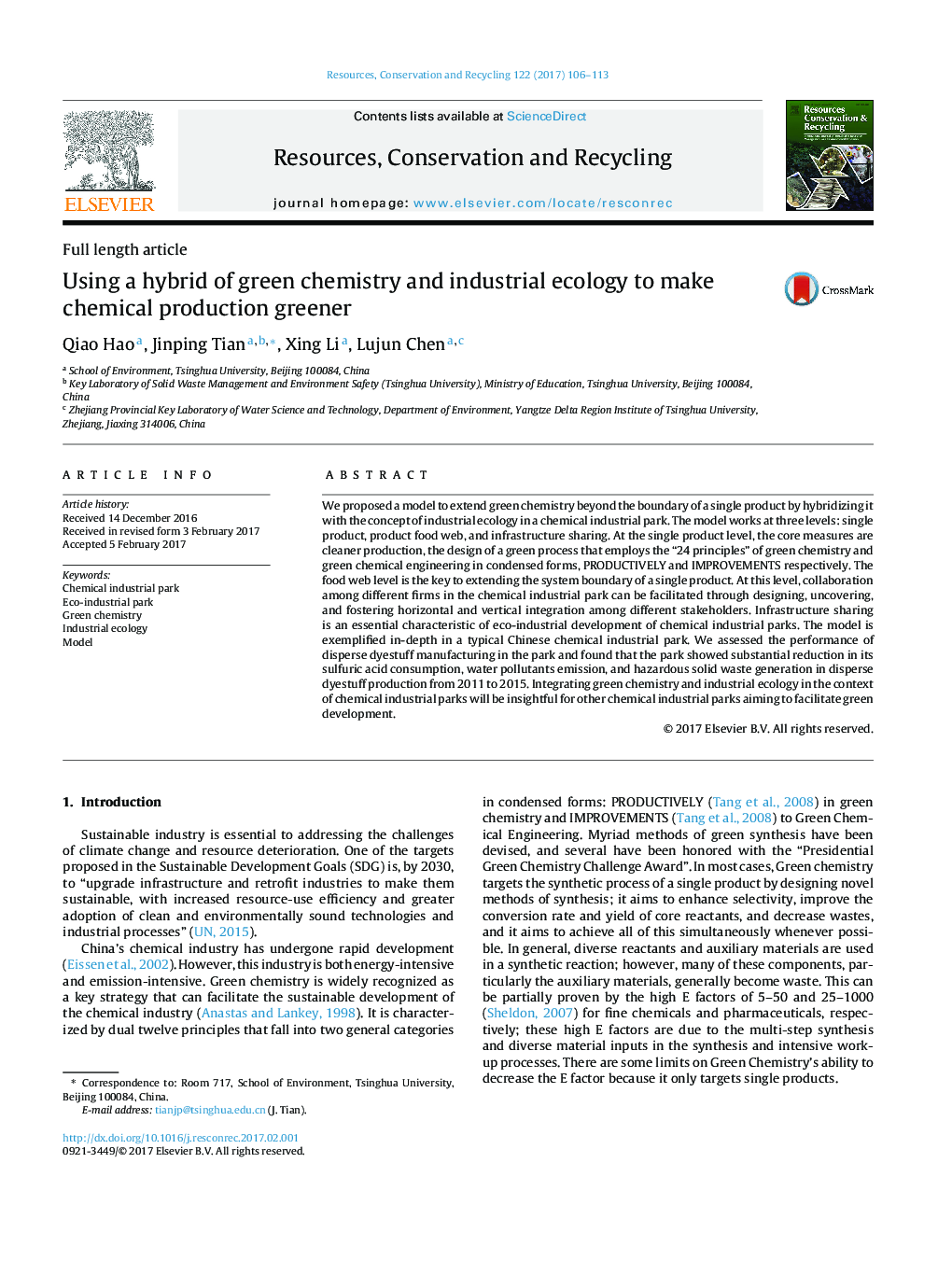| Article ID | Journal | Published Year | Pages | File Type |
|---|---|---|---|---|
| 5118781 | Resources, Conservation and Recycling | 2017 | 8 Pages |
Abstract
We proposed a model to extend green chemistry beyond the boundary of a single product by hybridizing it with the concept of industrial ecology in a chemical industrial park. The model works at three levels: single product, product food web, and infrastructure sharing. At the single product level, the core measures are cleaner production, the design of a green process that employs the “24 principles” of green chemistry and green chemical engineering in condensed forms, PRODUCTIVELY and IMPROVEMENTS respectively. The food web level is the key to extending the system boundary of a single product. At this level, collaboration among different firms in the chemical industrial park can be facilitated through designing, uncovering, and fostering horizontal and vertical integration among different stakeholders. Infrastructure sharing is an essential characteristic of eco-industrial development of chemical industrial parks. The model is exemplified in-depth in a typical Chinese chemical industrial park. We assessed the performance of disperse dyestuff manufacturing in the park and found that the park showed substantial reduction in its sulfuric acid consumption, water pollutants emission, and hazardous solid waste generation in disperse dyestuff production from 2011 to 2015. Integrating green chemistry and industrial ecology in the context of chemical industrial parks will be insightful for other chemical industrial parks aiming to facilitate green development.
Related Topics
Physical Sciences and Engineering
Energy
Renewable Energy, Sustainability and the Environment
Authors
Qiao Hao, Jinping Tian, Xing Li, Lujun Chen,
